Glenrothes, Fife, Scotland, UK 作者: 来源: 发布时间:2021-07-29
I. Population and Area
Continent: Europe
Country: The U.K
State/Province: Scotland
City/Town: Glenrothes, Fife
Total Area: 8.00 (sq mi)
Population in 2018: 38.24 (thousand)
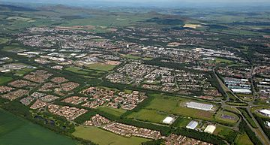
II. Natural Geography (environment and resources)
Geography
Glenrothes lies in mid-Fife between the agricultural Howe of Fife in the north and east and Fife's industrial heartland in the south and west. Its immediate neighbouring settlements are Coaltown of Balgonie, Leslie, Markinch and Thornton, the boundaries of which are virtually indistinguishable from Glenrothes' forming a contiguous urban area. The villages of Kinglassie, Milton of Balgonie and Star of Markinch are located slightly further away and are physically separated from Glenrothes by farmland. Kirkcaldy, a former royal burgh, port and industrial town is the next nearest large settlement located approximately 7 miles (11 km) to the south. Glenrothes is also located equidistant from two of Fife's other historically important principal settlements, Dunfermline and St Andrews, at 19 miles (31 km) and 21 miles (34 km) away. Two of Scotland's major cities, Edinburgh and Dundee, are located almost equidistantly from Glenrothes at 32 miles (51 km) and 27 miles (43 km) away, respectively. The smaller Scottish city of Perth is located 23 miles (37 km) to the northwest.
The northern parts of the settlement lie upland on the southern fringes of the Lomond Hills Regional Park. The central parts of the town extend between the Warout Ridge and the southern edge of the River Leven valley; a substantial green space which passes east west through the town. Southern parts of Glenrothes are largely industrial and are situated on land which gently slopes south towards the Lochty Burn and the village of Thornton. The height above mean sea level at the town centre is 300 feet (91 m). Temperatures in Glenrothes, like the rest of Scotland, are relatively moderate given its northern latitude. Fife is a peninsula, located between the Firth of Tay in the north, the Firth of Forth in the south and the North Sea in the east. Summers are relatively cool and the warming of the water over the summer results in warm winters. Average annual temperatures in Glenrothes range from a maximum of 18 °C (64 °F) to a minimum of 9 °C (48 °F).
A linked network of semi-natural landscape areas throughout the town allow for a mix of biodiversity with different flora and fauna and wildlife habitats. Areas of ancient woodland are found in Riverside Park and Balbirnie Park, both of which are also designated historic gardens and designed landscapes. Balbirnie Park is renowned for having a large collection of rhododendron species. Protected wildlife species found in the Glenrothes area include red squirrels, water voles and various types of bats. Landscape areas also act as natural drainage systems, reducing the likelihood of flooding in the built up areas of the town, with rainwater flows channelled to the River Leven, or to the Lochty Burn. Landscape planning has also ensured that Glenrothes' road network, with particular focuses on the town's many roundabouts, provides green networks throughout the town.
Transport
Glenrothes has a planned road network with original masterplans establishing the principle that "through traffic" be bypassed around the housing precincts by a network of "Freeway" and "Highway" distributor roads. These would connect each precinct to the purposely designed town centre and to the industrial estates. Another element that was adopted was the use of roundabouts at junctions instead of traffic lights which would allow traffic to flow freely.
The town has direct dual-carriageway access to the M90 via the A92 Trunk Road. The A92 passes north/south through the town and connects Glenrothes with Dundee in the north and Dunfermline in the southwest where it merges with the M90. This gives Glenrothes a continuous dual-carriageway link to Edinburgh and the major central Scotland road networks, whilst much of the route north to Dundee remains a single-carriageway. Local campaigners have for a number of years sought the upgrade of the A92 north of Glenrothes. The A911 road passes east/west through the town and connects it with Levenmouth in the east and Milnathort and the M90 in the west. The B921 Kinglassie Road, described in early masterplans as the Southern Freeway, links Glenrothes to the former mining communities of Cardenden and Kinglassie, and to Westfield. The route is a dual carriageway between Bankhead Roundabout and as far west as Fife Airport. Early masterplans show that this route was originally intended to be upgraded to provide dualled connections to the A92 Chapel junction in Kirkcaldy, however this has never been implemented.
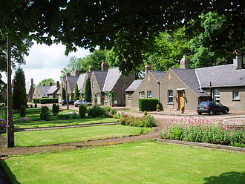
III. Economy
Poundworld went into administration in June 2018. The Glenrothes store subsequently closed in July 2018.
Sports Direct reported a sharp fall in profits from £281.6m in 2016/17 to £77.5m in 2017/18. There are no current plans for store closures.
Dixons Carphone reported a fall in profits in June 2018. The retailer is set to close 92 of its more than 700 stores this year. No stores in Fife are currently scheduled to close.
New Look reported a drop in sales in 2017/18. The company is set to close 60 stores and cut 1,000 jobs. There is no proposal at present to close the Glenrothes store.
Work is underway on the new £10 million development in the centre of Glenrothes.
The development of the former CISWO site on North Street is expected to be completed by the end of the year and host a number of retailers and restaurants, including a Marks & Spencer’s Food Hall, Tony Macaroni and KFC. Work is expected to be completed by the end of 2018.
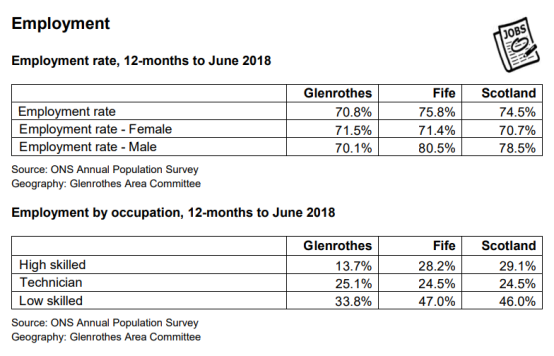
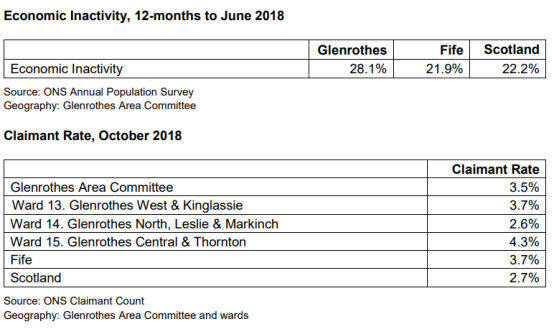
Glenrothes Industry Employed compared according to UK Census 2011 | |||
Glenrothes | Fife | Scotland | |
Area Committee Total Population | 50,701 | 366,910 | 5,327,700 |
All Persons 16-74 in Employment | 23,493 | 167,326 | 2,516,895 |
% Primary Industry | 3.0% | 2.4% | 3.3% |
% Manufacturing | 14.9% | 10.0% | 7.7% |
% Utilities | 1.3% | 1.4% | 1.6% |
% Construction | 8.2% | 8.2% | 8.0% |
% Wholesale, Retail & Transport | 19.4% | 18.6% | 19.9% |
% Accommodation and Food | 4.8% | 5.6% | 6.3% |
% ICT | 2.2% | 3.0% | 2.7% |
% Finance & Professional | 15.6% | 19.1% | 20.1% |
% Public Sector | 8.6% | 7.8% | 7.0% |
% Education & Health sector | 21.9% | 23.8% | 23.4% |
Large employers located within Glenrothes include: Bosch Rexroth; Raytheon; Fife Council; Fife Fabrications; Semefab; Velux; CoorsTek; Glendale Plastics; ASDA; and
Morrisons.
46 businesses listed in Fife Council Economic Development’s Top 200 businesses are located in Glenrothes. These businesses are account managed by Economic Development based on their size, turnover or relative importance to the local economy.
Reference Website:
https://know.fife.scot/wp-content/uploads/sites/44/2018/12/Economic-Profile-2018-Glenrothes.pdf
IV. Industrial Characterisitics
Major industries:
Manufacturing and engineering industries
The 2011 Census showed that manufacturing accounted for almost 15% of employment in Glenrothes. In 2015 this amounted to over 4,000 jobs in the local area, or almost a third of all manufacturing jobs in Fife. A number of high tech industrial companies are located in the town largely specialised in electronics manufacturing making the Glenrothes area one of Scotland's largest clusterings of electronics companies. These are what remain of Silicon Glen operations in the area which gradually reduced and then consolidated since the peak in the late 1990s. Local companies specialised in this sector include Compugraphics which develops photomasks for the microelectronics sector, CTDI (formally Regenersis) which provides technology repair and test services, Leviton (previously Brand Rex) which produces fibre optic cabling, Raytheon which specialises in electronics for the defence industry and Semefab which produces Micro Electric Mechanical Systems (MEMS) and TDK-Micronas which manufactures semiconductors. Other major companies which have established a base in Glenrothes include Bosch Rexroth (hydraulics manufacturing), CoorsTek (technical ceramics), FiFab (precision engineering) and Velux (Window and Skylight Manufacturers).
Major projects and related introductions:
Glenrothes was one of five Scottish new towns to be built in the post-war era. Now, to mark its 70th anniversary later this year, a seven month innovative digital storytelling project has brought together residents to share their experience of living in a purpose-built community.
Dan Brown - no relation to the American author - was hired to work with various community groups to create “digital stories” that capture life in the town. More than 50 short videos were created as a result, and have now been shared online for residents past and present to enjoy.
Reference Website:
https://www.scotsman.com/arts-and-culture/ahead-its-70th-anniversary-glenrothes-tells-its-digital-story-1432560
https://www.scotsman.com/arts-and-culture/ahead-its-70th-anniversary-glenrothes-tells-its-digital-story-1432560
V. Attractions
1. Kirkcaldy Waterfront:
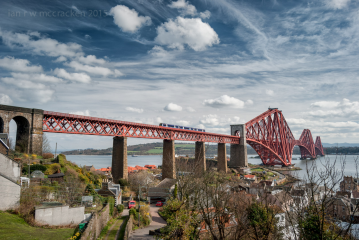
This section of the Coastal Path is a curious blend of modern industry, cultural heritage, valued nature reserve and iconic bridges. The path starts at Kincardine Bridge, at the Archway marking the start of the Fife Coastal Path, and heads east to Inch House, Inch Farm and then onto the junction outside Longannet Power Station. Take care crossing this junction. From here onwards you are following Cycle Path Route 76. From the path you will get good views of one of our largest power stations. Watch out for a couple of areas of reed marsh beside the path which hold a few interesting species. The path joins up with the railway line as you near Culross and from here you are skirting the edge of Torry Bay Local Nature Reserve. You will then pass through the village of Culross which is always worth exploring for its beautiful Palace and rich cultural heritage.
2. Fife Coastal Path - Kincardine to Limekilns:
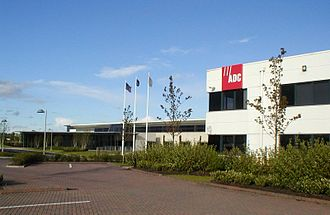
This section of the Coastal Path is a curious blend of modern industry, cultural heritage, valued nature reserve and iconic bridges. The path starts at Kincardine Bridge, at the Archway marking the start of the Fife Coastal Path, and heads east to Inch House, Inch Farm and then onto the junction outside Longannet Power Station. Take care crossing this junction. From here onwards you are following Cycle Path Route 7. From the path you will get good views of one of our largest power stations. Watch out for a couple of areas of reed marsh beside the path which hold a few interesting species. The path joins up with the railway line as you near Culross and from here you are skirting the edge of Torry Bay Local Nature Reserve. You will then pass through the village of Culross which is always worth exploring for its beautiful Palace and rich cultural heritage. The path passes through Newmills and Torryburn then goes back along the edge of the nature reserve with its rare salt marsh plant communities before leaving the beach to head up to the Old Kirk.
3. Dalbeath Marsh:
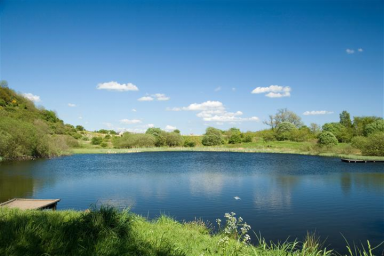
Dalbeath Marsh is a former quarry site just west of Cowdenbeath. There is a pleasant 0.75mile circular path running around the entire site. Dalbeath Marsh is a valuable resource for both local education and recreation with an interesting variety of wildlife. As well as the open water, the site includes interesting wetland and grassland with small pockets of woodland. Rich in flora, there are a wide varerity of sedges, orchids, grasses, aquatic and heath plants which mean that the site has been designated as a Site of Special Scientific interest (SSSI).
Reference Website:
https://www.welcometofife.com/things-to-do-results/free-attractions
VI. History
Toponymy
The name Rothes comes from the association with the Earl of Rothes, of the Leslie family from NE Scotland. This family historically owned much of the land on which Glenrothes has been built, and gave its name to the adjacent village of Leslie. "Glen" (from the Scottish Gaelic word gleann meaning valley) was added to prevent confusion with Rothes in Moray, and to reflect the location of the town within the River Leven valley.
Glenrothes new town
Glenrothes was designated in 1948 under the New Towns Act 1946 as Scotland's second post-war new town. The planning, development, management and promotion of the new town was the responsibility of the Glenrothes Development Corporation (GDC), a quango appointed by the Secretary of State for Scotland. The corporation board consisted of eight members including a chairman and deputy chairman. The first meeting of the GDC was in Auchmuty House, provided by Tullis Russell on 20 June 1949.
The original plan was to build a new settlement for a population of 32,000 to 35,000. The land which Glenrothes now occupies was largely agricultural, and once contained a number of small rural communities and the hamlets of Cadham and Woodside, which were established to house workers at local paper mills. The original proposals for the new town would have centred it on Markinch; however the village's infrastructure was deemed unable to withstand the substantial growth that would be needed for a new town of the scale proposed and there was considerable local opposition to the plans. Leslie and Thornton were also considered as possible locations, again meeting local opposition, and eventually an area of 5,320 acres (2,153 ha) between all of these villages was zoned for the new town's development. Much of the historical Aytoun, Balfour, Balgonie and Rothes estates were included in Glenrothes' assigned area along with the historical country houses Balbirnie House, Balgeddie House and Leslie House.
Industrial heritage
Before Glenrothes was developed, the main industries in the area were papermaking, coal mining and farming. Local paper manufacturers included the Tullis Russell and Dixons Mills near Markinch in the east and the Fettykil and Prinlaws Mills to the west at Leslie. The location of the mills was strategic to capitalise on the natural energy provided by the River Leven.

Scotland had emerged from the Second World War in a strong position both to contribute to the UK's post-war reconstruction, and to help repay heavy overseas debt incurred in rearmament and six years of war. At the heart of government strategy was the need to produce energy, and the first focus of the resulting industrial renewal was massive investment by the state in the Scottish coal industry. The case for developing Glenrothes was partially driven by this strategy, and was further advanced in a report produced in 1946 by Sir Frank Mears to the Central and South-East Scotland Planning Committee. This specifically made the case for a new town in the Leslie-Markinch area to support growth in the coal mining industry in Fife.
Cadco Scandal
On 28 May 1963 Cadco Development Ltd held a press conference in Edinburgh to announce that they were bringing 2,000 jobs to Glenrothes. They were going to take three factories on the Queensway Industrial Estate; open pig breeding units at Whitehill; and build a supermarket in the town centre. Cadco's board of directors included the film star George Sanders and his wife Benita Hume alongside Denis Loraine and Tom Roe. Denis Loraine soon persuaded the Glenrothes Development Corporation that the construction work should be carried out by Cadco's own building company, which had opened a depot in nearby Kirkcaldy.
VII. Culture
Public artworks
In 1968 Glenrothes was the first town in the UK to appoint a town artist. This is now recognised as playing a significant role, both in a Scottish and in an international context, in helping to create the idea of art being a key factor in creating a sense of place. Two town artists, David Harding (1968–78) and Malcolm Robertson (1978–91), were employed in the lifetime of the Glenrothes Development Corporation (GDC). Both artists, supported by a number of assistants, created a large variety of artworks and sculptures that are scattered throughout the town.] Other artists have also contributed to the creation of the town's artworks. The first sculpture erected in Glenrothes was "Ex Terra", created by Benno Schotz which was inspired by the town's motto Ex Terra Vis (Latin) meaning "From the earth strength". "The Good Samaritan" sculpture in Riverside Park was produced by Edinburgh-based sculptor, Ronald Rae, who was commissioned by the GDC to produce a piece of art work in celebration of the town's 40th anniversary in 1988.
Public parks and horticulture
The town has won numerous awards locally and nationally for the quality of its landscaping; something that is promoted by the "Take a Pride in Glenrothes" (TAPIG) group. The Glenrothes Development Corporation devoted around one third of land in Glenrothes to the provision of open space. As a consequence the town has numerous parks, the largest being Balbirnie Park, Carleton Park, Gilvenbank Park, Riverside Park, and Warout Park. The Lomond Hills Regional Park borders and enters the town to the north and east.
Civic and heritage facilities
Rothes Halls is the town's main theatre, exhibition, conference and civic centre. The town's main library and a cafe also form part of the complex. The Rothes Halls was officially opened by actor and director Richard Wilson on 30 November 1993. Since then it has played host to a vast range of local, national and international shows; popular music and entertainment acts, and amateur societies. It also hosts an annual Kingdom Of Fife Real Ale and Cider Festival, the Glenrothes comic con and a science festival. The Glenrothes & Area Heritage Centre established a permanent base in November 2013 following a series of successful temporary exhibitions held previously in the town centre. The heritage centre is run by local volunteers and operates from a shop unit in the Kingdom Shopping Centre. It focuses on the history of the Glenrothes area from a period between the early 19th century to the late 20th century.
Social clubs and organisations
There are a number of social clubs and organisations operating within Glenrothes which contribute to the cultural and community offerings of the town. These include an art club, various youth clubs, a floral art club, amateur theatre groups, a choral society and a variety of sports clubs. Glenrothes hosts an annual gala which is held at Warout Park and has a variety of family activities including a dog show, highland dancing and a travelling funfair with stalls. Summer and winter festivals were held in Riverside Park in 2012. The summer festival included sporting events along with arts and crafts, food stalls and fairground shows. The winter festival coincided with bonfire night celebrations and included the town's annual fireworks display which was previously held at Warout Park. Markinch and Thornton each host an annual Highland Games and the other surrounding villages host their own annual gala days and festivals.
VIII. Other information
Early precincts in the town were served by their own primary schools which were to be provided on the basis of one school for every 1,000 houses.The first primary school to be opened in Glenrothes was Carleton Primary School, built in 1953 in Woodside. In total thirteen primary schools were developed in the town, twelve non-denominational and one to serve catholic pupils. In February 2014 Fife Council's Executive Committee voted to close one of Glenrothes' primary schools at Tanshall as part of a wider school estate review which sought to reduce costs. The closure faced considerable local opposition and the proposals were called-in by the Scottish Government, but ultimately the closure of the school went ahead as planned and it was demolished in 2016.
There are three secondary schools in Glenrothes, the earliest of which is Auchmuty High School, opened in 1957. Secondary Schools were to be provided on the basis of one school for every 4,000 houses. Glenwood High School was built in 1962 to serve the western precincts. Prior to 1966 older pupils had to attend schools in neighbouring towns to continue "Higher" examinations as Auchmuty and Glenwood only provided for pupils at junior secondary level. Glenrothes High School was built in 1966 to accommodate pupils at a higher level. However changes in the education system nationally meant that both Auchmuty and Glenwood were raised to full high school status in the 1970s. Auchmuty High School serves the east and southern parts of Glenrothes as well as the villages of Markinch, Coaltown of Balgonie and Thornton. As part of the £126 million Building Fife's Future Project a replacement for Auchmuty was completed and opened to pupils in 2013. Glenrothes High School serves the central and northern areas in the town. Glenwood High School serves the western parts of Glenrothes and the villages of Leslie and Kinglassie. Catholic pupils in Glenrothes attend St Andrew's High School in neighbouring Kirkcaldy.
Further education in the town is provided at Fife College. Construction of a Glenrothes college campus began in the early 1970s, originally specialising in paper manufacturing, mechanical engineering and electrical engineering courses. A second institute known as FIPRE (Fife Institute of Physical and Recreational Education) was built adjacent catering for sport and physical education as well as providing a sports centre for the town. The Glenrothes campus of the college is located at Stenton Road in Viewfield. This was significantly extended in 2010 with the development of the "Future Skills Centre". It includes departments in engineering, construction, renewables and science to cater for emerging industries specialising in renewable energy and low carbon technologies as well as provide training for major engineering projects.
IX. Contact information
Mayor/Officer: Cllr. Ken Caldwell
Tel: 07872 423835
Mail: cllr.ken.caldwell@fife.gov.uk
Reference Website:
https://www.fife.gov.uk/kb/docs/articles/about-your-council2/politicians-and-committees/your-local-councillors/councillor/buckhaven,-methil-and-wemyss-villages/cllr-ken-caldwell
